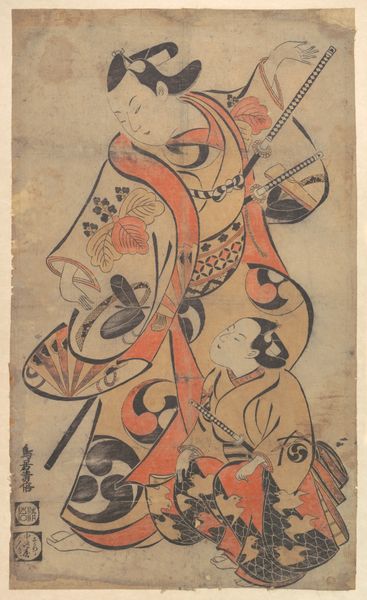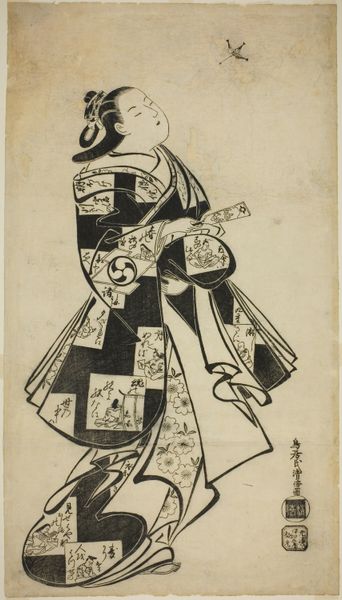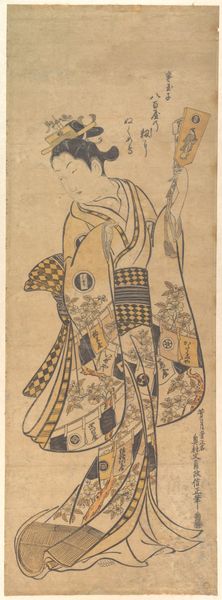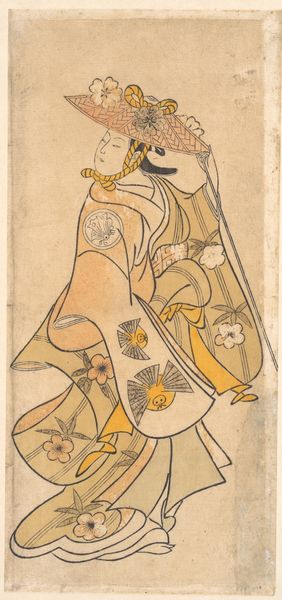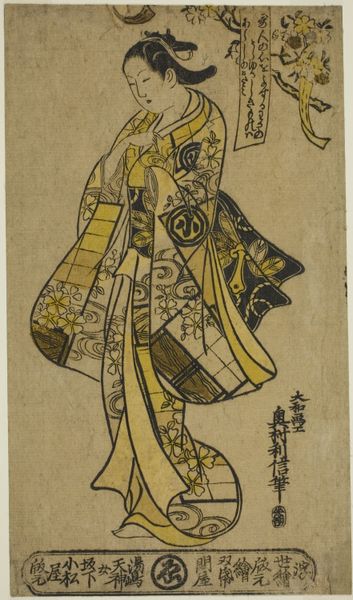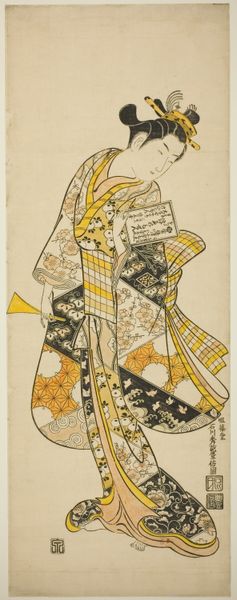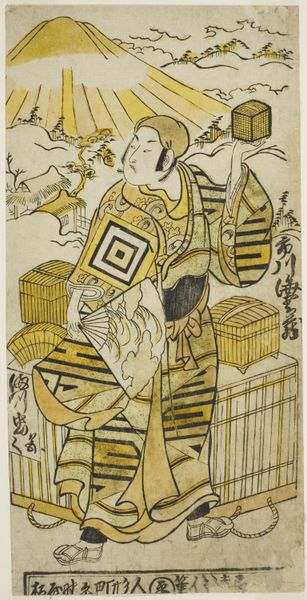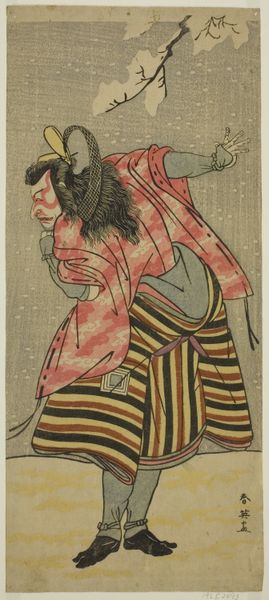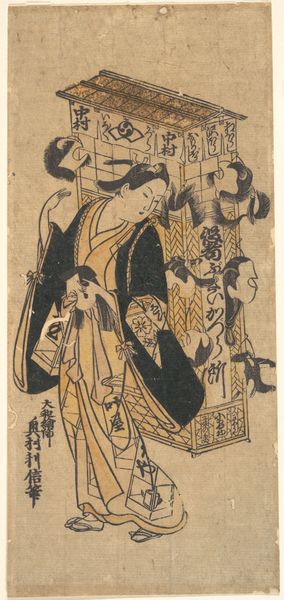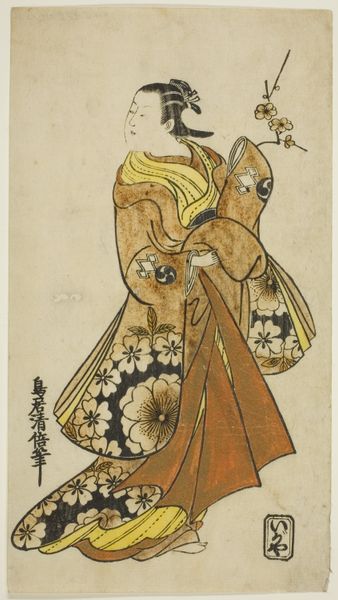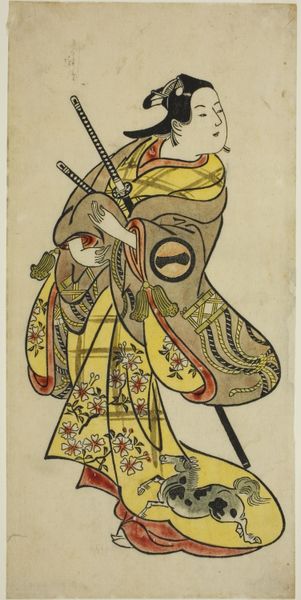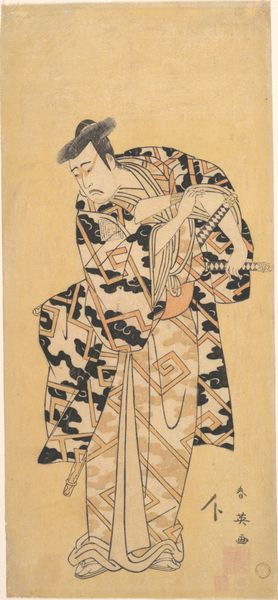
drawing, print, woodcut
#
portrait
#
drawing
# print
#
asian-art
#
ukiyo-e
#
figuration
#
woodcut
Dimensions: 31.6 × 16 cm (12 7/16 × 6 5/16 in.)
Copyright: Public Domain
Curator: Before us is "The Actor Nakamura Denkuro I," a woodcut print created around 1710 by Torii Kiyonobu I. It’s part of the collection here at The Art Institute of Chicago. Editor: I'm immediately drawn to the figure's almost dreamlike state. The composition, particularly the rhythmic pattern of the robes and the deliberate lines, create a very meditative feeling, despite the bold figuration. Curator: It is certainly captivating. Thinking about this ukiyo-e print, the process is key. Each color would have required a separate block, carefully carved and printed by skilled artisans. We can consider this image a product of collaborative labor involving artist, carver, printer and publisher to distribute the representation of a popular idol for mass consumption. Editor: Absolutely, and the limited palette contributes to the overall impact. The flat planes of color, outlined by strong black lines, demonstrate a sophisticated understanding of visual space and its reduction to essential forms. This formal abstraction intensifies the emotive weight of the subject. Curator: Exactly. Kiyonobu’s family workshop innovated kabuki advertisements with bold figuration that expressed dynamic energy through simple means. Actors were celebrities whose images helped create consumer desires around fashion, food, travel to specific theaters and neighborhoods – even tea houses. This piece allows us to consider the complex social relationships constructed through the production, distribution, and consumption of the print. Editor: Considering the socio-economic factors gives further nuance. However, within the picture plane, there is a remarkable focus on pattern. The robe’s circular designs contrast with the striated under-dress to create a captivating tension. And these material elements contribute to a symbolic construction. Curator: I agree that the interplay between surface and symbol enhances the portrait, but would stress that even his tools and attire had cultural meaning. The swords and elaborate robes were key attributes and part of an actor's carefully constructed persona in early 18th century Japan. Editor: Fair enough. The artist seems intent on capturing not only a likeness but also an idealized representation of the actor. His posture, clothing, and very visage project authority. It allows one to reflect on enduring questions around cultural construction. Curator: This piece gives such a great example of this tension of making, image, and circulation, and demonstrates how mass produced works are embedded within very specific cultural conditions. Editor: For me, looking at this image remains rooted in visual terms: an immersive meditation on composition, colour, and the expressive possibilities of form.
Comments
No comments
Be the first to comment and join the conversation on the ultimate creative platform.
